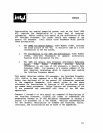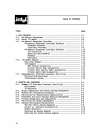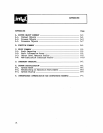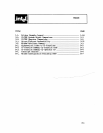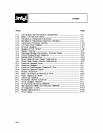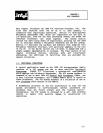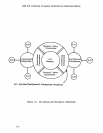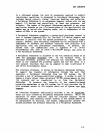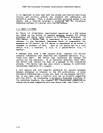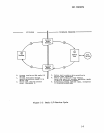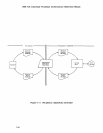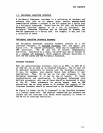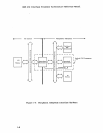
KEY
CCHE?TS
In
a 432-based
system,
the
bulk
of
processing
required
to
support
inplt/out];Xlt
operations
is
delegated
to
Peripheral
Subsystems;
this
includes
device
control,
timing,
interrupt
handling
and
buffer
ing
•
A
Peripheral
Subsystem
is
an autonomous computer system
with
its
own
memory,
I/O
devices
am
controllers,
at
least
one
processor,
and
software.
The number
of
Peripheral
Subsystems employed
in
any
given
application
depems
on
the
I/O-intensiveness
of
the
application;
the
number
may
be
var
ied
with
changing
needs,
and
is
independent
of
the
number
of
GDPs
in
the
system.
A
Peripheral
Subsystem resembles a
conventional
mainframe
channel
in
that
it
assumes
responsibility
for
l~level
I/O
device
su~rt
and
executes
in
parallel
with
432 system
processor(s).
Unlike
a
simple
channel,
however, each
Peripheral
Subsystem
can
be
configured
with
a
complement
of
hardware and
software
resources
that
precisely
fits
application
cost
am
performance
requirements.
In
general,
any
system
that
can
oonmunicate
over
a
standard
8-
or
l6-bi
t
microcooputer
bus,
such
as
Intel's
Multibus'IM
design,
may
serve
as
a
432
Peripheral
Subsystem.
A
Peripheral
Subsystem
is
attached
to
the
432
system
by
means
of
an
iAPX
432
Interface
Processor
(IP).
At
the
hardware
level,
an
Interface
Processor
presents
two
separate
bus
interfaces.
One
of
these
is
the
standard
432
processor
packet
bus and
the
other
is
a
very
general
interface
that
can
be
adapted
to
nost
traditional
8-
and
16-bit
microcomputer
buses.
The
Interface
Processor
is
driven
by
Peripheral
Subsystem
software.
'lb
sUQ?Ort
the
transfer
of
information
through
the
wall
that
separates
a
Peripheral
Subsystem from
the
432
system,
the
IP
provides
a
set
of
software-controlled
windows. A window
is
used
to
expose a
single
object
(data
structure)
in
432
system
memory
so
that
its
contents
may
be
transferred
to
or
from
the
Peri.pheral
Subsystem. Tb
preserve
the
integrity
of
the
capability-based
protection
mechanisms
in
the
432
system,
the
IP
only
provides
the
PS
with
windowed
access
to
432
objects
which
are
of
system
type
data
segment.
An
Interface
Processor
additionally
provides
a
set
of
functions,
which
are
also
invoked
by
Peripheral
Subsystem
software.
While
the
operation
of
these
functions
(and
the
returned
results)
varies
considerably,
they
generally
permit
objects
in
432 system
memory
to
be
manipulated
as
enti
ties,
and
enable
conmunication between 432
system
processes
and
software
executing
in
a
Peripheral
Subsystem.
1-3



